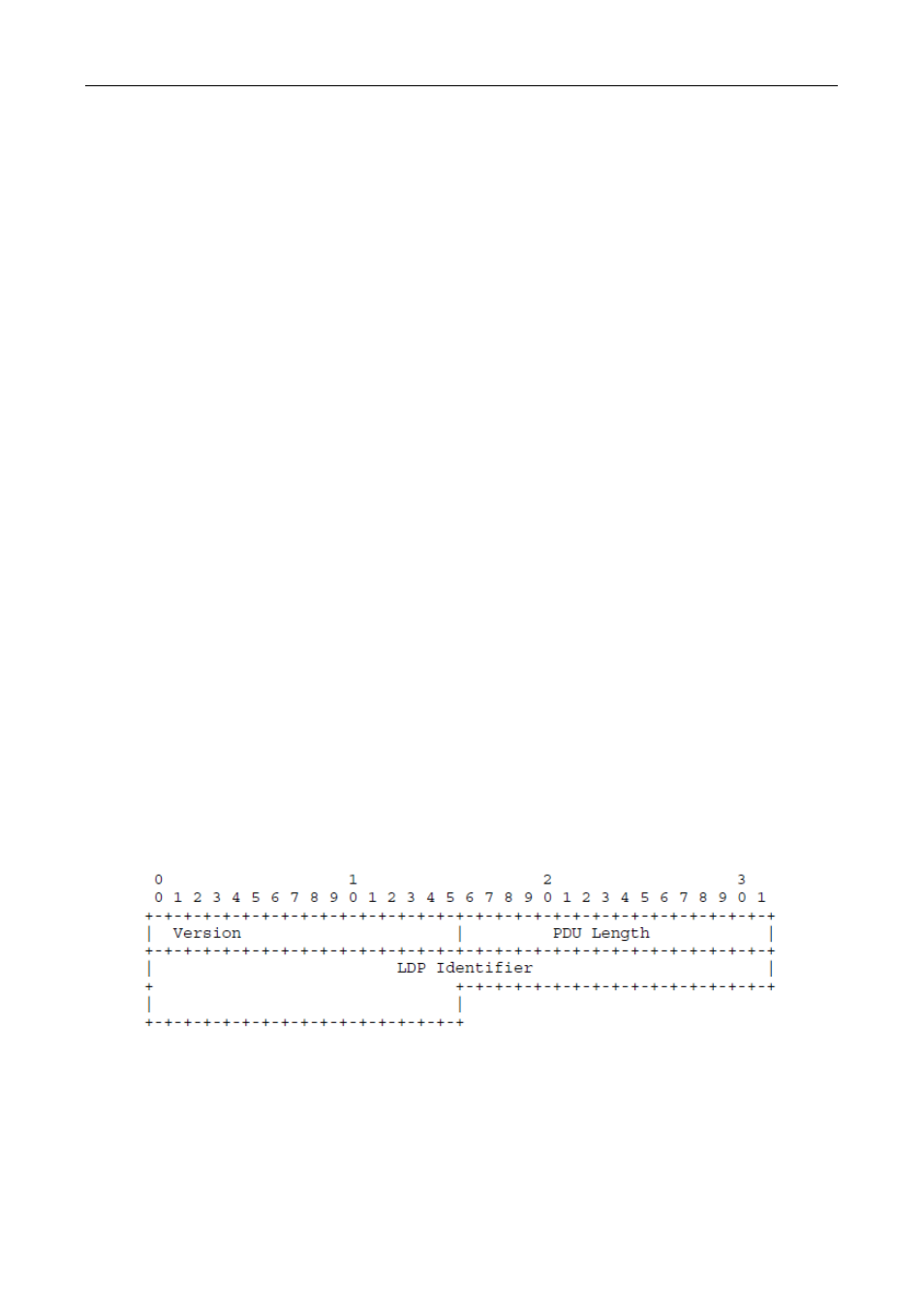1 basic concept of ldp, 2 introduction to ldp message format, 1 basic concept of ldp -9 – PLANET XGS3-24042 User Manual
Page 655: 2 introduction to ldp message format -9

80-9
80.1.1 Basic Concept of LDP
LDP Peer
When distributing labels to FEC, LDP needs to advertise this label and its meaning in the MPLS network to
create LSP. LSR is a LDP peer when switching label information via LDP. LDP peers obtain each other’s label
map and other messages.
LDP Session
Two LSR will create a LDP session between each other after exchanging LDP Discovery Hello messages.
LSP relies on LDP sessions to exchange messages like label map, release.
Two steps to establish a LDP session
Establish the transmission connection.
Initialize the session
Two types of LDP session:
Local LDP Session: the two LSR establishing the session are directly connected.
Remote LDP Session: the two LSRs establishing the session are indirectly connected
LDP Message Type
Four types of LDP messages:
Discover message: to advertise and maintain the existence of LSR in the network;
Session message: to create, maintain and terminate the sessions between LDP peers;
Advertisement message: to create, change and delete the map from label to FEC;
Notification message: to provide advice messages and error notices.
To ensure the reliable sending of LDP messages, LDP uses TCP to send Session, Advertisement and
Notification messages, and UDP to send Discovery ones.
80.1.2 Introduction to LDP Message Format
LDP PDU
LDP PDU includes a LDP header and several LDP messages. The LDP header format is as follows:
Figure 80-1 The LDP Header Format
Version:The LDP version, I byte. The current LDP version is 1.
PDU Length:The total length of the LDP message (in byte), 2 bytes.
LDP ID:LDP ID, 6 bytes. The first 4 bytes is the globally unique LSR ID, and the rest 2 are label
space ID, which is 0 when it comes to the global label space.